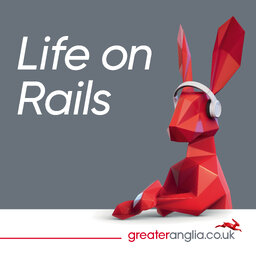How To Design A Train, Make Announcements & Travel To London Cheaply
In Episode 2 of Life on Rails, Juliette Maxam and Lucy Wright take another look behind the scenes at Greater Anglia.
Have you ever wondered who decides what colour trains should be and designs the interior? In this episode we speak to Jason Brandon, who as brand manager of Greater Anglia, was responsible for what the new trains should look like – and answers the question - "why do they have carpets?”
Engineering director Martin Beable picks his favourite green features of the new trains, while accessibility manager Rebecca Richardson explains some of the innovative features which are making the railway more accessible for all. Resident fares guru Ken Smith gives his top tips on cheap travel for nights out in London. Listen in to meet Julie Berry, voice over artist and the woman behind Greater Anglia's announcements.
Finally, Juliette and Lucy talk about snow and ice, and what the railway does to cope with it.
Icicles in Ipswich tunnel - https://twitter.com/networkrail/status/969514836609634304
Network Rail’s snow plough - https://twitter.com/GreaterAngliaPR/status/970305018934054912
London evening out tickets - https://www.greateranglia.co.uk/londonevening
 Life On Rails
Life On Rails


